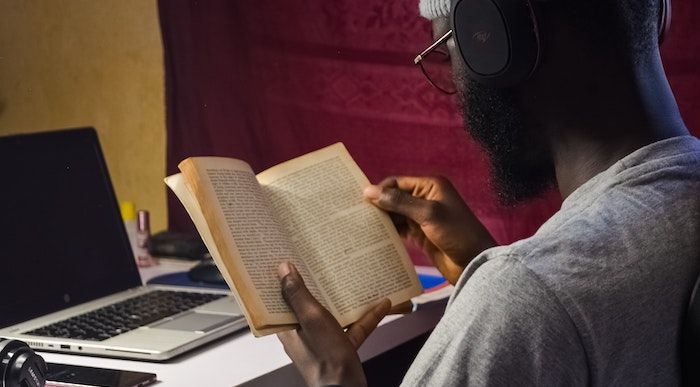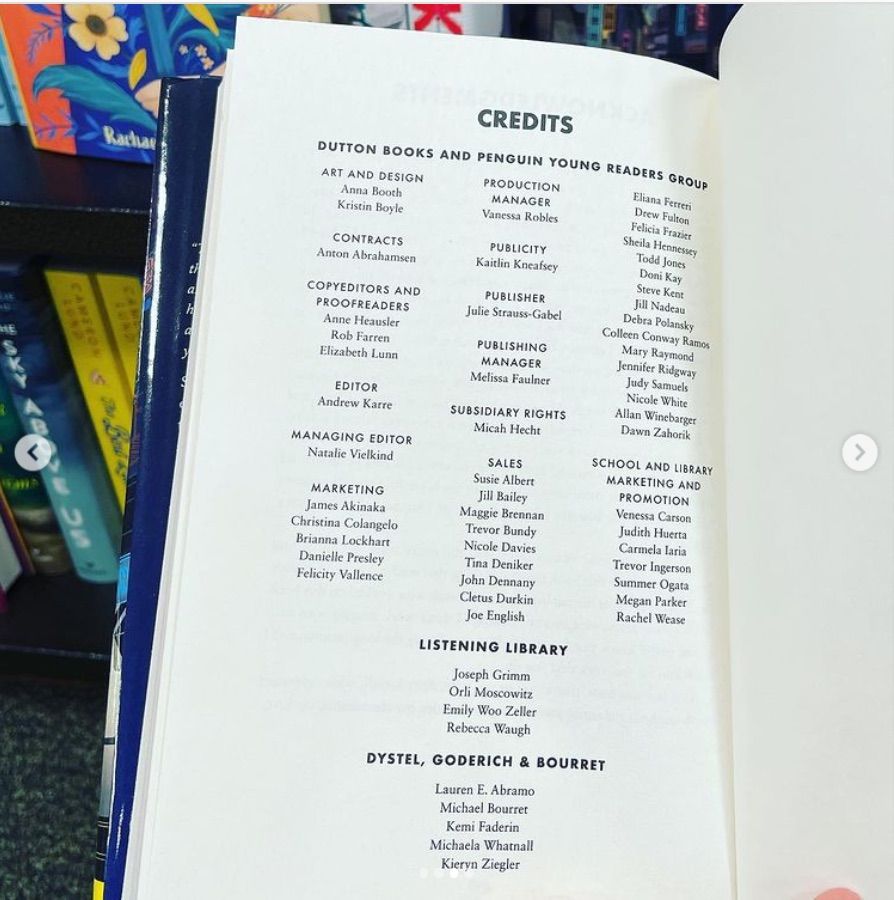Paratext fascinates me to no end. I love looking and thinking about all of the pieces that comprise a book which aren’t the actual narrative itself: the book’s colophon, the book’s description and flap copy, the author’s biography, and the copyright page hold so much information about the book and its context that overlooking them feels wrong. I believe in reading a book’s introduction, as well as any foreword or afterword, and I can’t get enough of a book dedication or acknowledgements.
Before falling into the world of books, first as a librarian, then as a writer and editor, I didn’t think too much about the pieces of a book or how it came together. I mostly perused acknowledgments to see if there were any familiar names or, when I began to understand what it was I loved in a book, to discover if books I really enjoyed were edited or agented by the same people. There’s a lot of reader service in finding common themes an editor likes in their books, for example, or seeing the types of books an agent represents.
But then, I published a book and I realized the true value in all of these elements of a book, both as a writer and as a reader.
Acknowledgements have always been one of the toughest parts of writing a book for me. They’re not mandatory or required, but I consider each and every person I name. Over the years, my acknowledgements have shrunk. This isn’t for lack of support or gratitude but instead, for better understanding who it is in my life that really helped make the book what it is. My family, of course, alongside a handful of close friends, some folks whose work inspires me, and, most importantly, the team who helped make the book possible, including my agent, editor, publisher, and slew of other people in marketing, publicity, copy editing, and beyond. I stress about who I may have inadvertently left out. I’ve been purposeful in never dedicating a book to a single individual — for an anthology, the book isn’t one I feel enough ownership of to dedicate, as it’s a collective project, dedicated entirely to the readers who need it.
It’s impossible to not look at a book now and to consider what’s been included and what hasn’t. These are all deliberate choices, and they speak volumes to what is valued in a book’s production. It may not be intentional, but it says a lot when a book doesn’t include the cover designer or artist’s name — more publishers are getting better at including it on a book’s jacket or back cover, in no small part due to book lovers on the internet. It’s frustrating, too, to discover how few books in translation include the translator’s name inside the book, let alone on the cover. The work of translation is more than worthy of a byline.
The extra steps to search for this information removes it further from the work itself. It’s not paratext then, but extraneous information, despite the fact that these people deserve on-page credit for their work.
So when Malinda Lo posted on Instagram about the Credits Page in her book Last Night At The Telegraph Club, I realized this may be the ultimate tool for readers, writers, and book appreciators:
Lo was surprised to see this in her book not because it was a product of the publisher. Instead, she requested that her book include a credits page and the book had been reprinted at a point where that addition could be made. The credits page did not need to wait until the book republished in paperback.
Authors, as noted above, can request an acknowledgements section or a dedication in their books. It counts against whatever the page count is of their book, which could mean tighter editing in text or being more limited in what can be included in that paratext. The credits page, as Lo explained, was something she’d requested and was delighted to see included much sooner than anticipated.
Among those listed in the credits page are not only the editor, agent, and publisher, but the slate of sales, marketing, and publicity people who helped put the book in front of readers. The book’s designers are listed, as are those who negotiate foreign rights and sales, copy editors, and even the team who worked on the audiobook edition of the novel. Every person who played a role in the book, be it replying to an email or being hands-on through months of editing, is seen as a vital part of the book’s creation.
I can only imagine the sigh of relief in knowing no one would be left off an acknowledgements page on the author side. And I can only be delighted on the reader side, knowing that I can look up the editor or agent and discover other books they’ve worked on, since chances are, our tastes align (and indeed, Andrew Karre edits some of my favorite YA authors and I find his insights on young adult literature to be keen).
Even seeing the team behind the audiobook is tremendous reader service. Emily Woo Zeller, who performs Lo’s audiobook, has done a number of other audiobook narrations, and seeing that — indeed, you’ll be seeing it unless you’re reading the book along with the audiobook — can easily lead down the path of discovering more fantastic books.
Another side effect of a credits page like this is that it opens up the possibilities for people looking to get into a publishing career. It’s easy to think publishing is simply editing or writing if you’re unfamiliar with the field. This insight into just how many roles there are within the creation of a single title makes clear that working in books is a whole world of facets and opportunities, depending on your interests, skills, and talents. I never knew until I was an author what a production editor/manager did, and now I know how that’s a role for someone who is great at deadlines, details, and ensuring a project flows through each step of a process seamlessly.
Though Lo’s book isn’t in translation, it’s not hard to see where credit for the hard work of the translator would be on this page, too.
Why is it more books don’t have a credit page, then? This is something an author can request, but to know that is knowledge in and of itself. Since these aren’t common, they aren’t readily thought of during the author’s work on a book. But is there a reason it simply isn’t standard practice in publishing? Those working within a publishing house are working in teams, so ensuring thanks to those team members wouldn’t be a time-consuming task.
Including a credits page takes the burden off authors to remember everyone. A credits page also offers an awesome tool for readers to learn more and for librarians to have ready reference in readers’ advisory. Perhaps most importantly, a credits page ensures that every hand that touched a book is seen. That designers are attributed, that editors are attributed, that translators and audio performers are attributed.
A credits page honors the lifecycle of a story, including the work which came before and what comes when the cover is closed.

